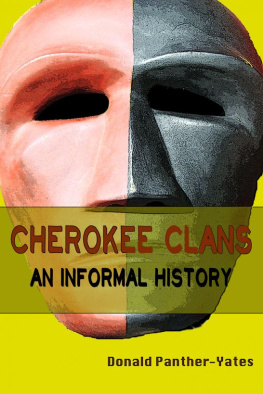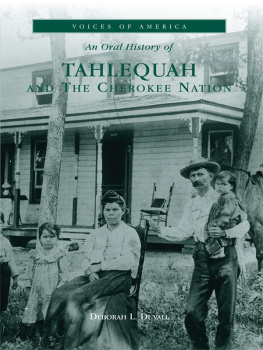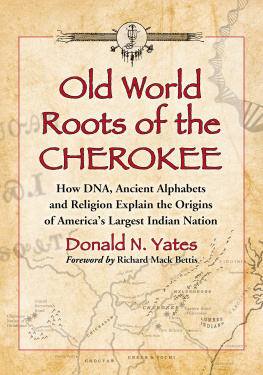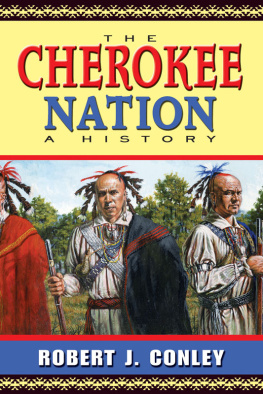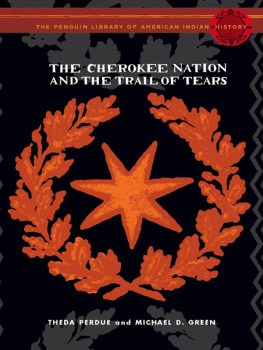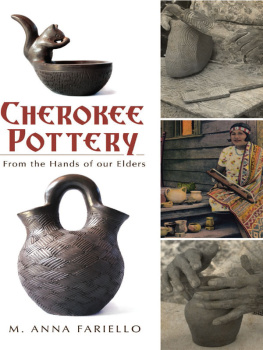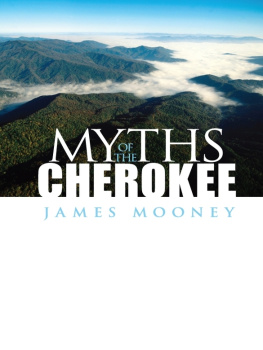Cherokee Clans
An Informal History
Donald N. Panther-Yates
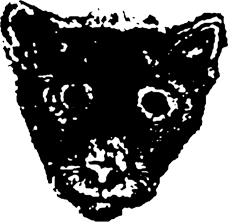
Panthers Lodge
Phoenix
2013
Copyright 2013 Donald N. Yates
Smashwords Edition
If we were naively to pose the question whothe Cherokee really are, and what constitute their origins anddivisions, we would be forced to admit that anything likedefinitive accounts are utterly lacking. This is the case eventhough Cherokees make up one of the oldestand today mostnumerousAmerican Indian groups. Scholars regard them as a sort ofenigma. The following notes are offered only in the spirit ofsketching some rudimentary facts I personally have been able topiece them together. They are not intended to be anything more thantentative.
The Cherokee clans were suppressed by thereforms of affluent half-breed planters following the death ofDragging Canoe in 1792 and white settlement of Tennessee. The LightHorse Brigade introduced by Maj. Ridge (al-Wadi) was modeled on theprevailing Arab institution of the qadi. Henceforth,Cherokee marshals, not clans, had the power to punish acts likeillicit sexual intercourse, theft, drunkenness and murder.
The formal decree abolishing clan law wascalled the Act of Oblivion and signed by Turtle at Home as Speaker,Black Fox as Principal Chief and seconded by Pathkiller andToochaler, Broomtown, September 11, 1808. A later act was executedat Eustanala, April 18, 1810, by order of the seven clans.
A conservative Ghost Dance Movement flared upin 1811 when Chief Black Fox died, but by the time of removal toIndian Territory in 1838 clans were little more than a name and amemory. Government rolls ignored them. Even though marriage withsomeone of your own clan was formerly punishable by death, clantraditions rapidly began to fade. Probably few Cherokee today canrecount the clan history of their parents and forebears with anygreat confidence. Descendants with little Cherokee blood, eventhose who may preserve a direct female line, are often completelyin the dark about clan affiliations.
The Cherokee Seven Clans are unique,distinctive, and unusual. They are Wolf (Ani-Wahiya), Bird(Ani-Tsiskwa), Deer (Ani-Kawi), Twister (Ani-Gilohi), Wild Potato(Ani-Gotegewi), Panther (Ani-Sahoni) and Paint (Ani-Wodi). Beforethey were codified into seven, considered a sacred number by theCherokee, there existed clans named raccoon, wildcat, fox, corn,water, Shawnee, crystal, wind, man, tree, tufted titmouse, raven,redbird, bluebird, holly, long prairie, blue, sun, fire, acorn andmany, many others. They are not exactly paralleled in other tribes.The Lenape, for instance, have four main clansWolf, Turtle, Turkeyand Fish. Other Indian peoples are divided into eightBuffalo,Thunderbird, Turtle, Wolf, Deer, Bird, Otter, and Bear.
Although sometimes combined with the PantherClan, the Bear Clan is usually ignored in the scheme. Thus BearClan members are not assigned a tier of seats in the nationalheptagon. Traditionally, they were supposed to be firewoodgatherers, cooks, herb doctors, builders, and healers. The Hopi andNavajo have dozens of clans and sub-clans, including Bear StrapClan.
Significantly, the word for clan in Cherokeeis simply a collective or plural prefix meaning animate beings orpeople (ani). The Seven Clans are called in Cherokee gatligwogiitsuniyvwi , literallyseven types of creatures, the latter word being related to thetribal name of the Cherokee Ani-Yunwiya (Principal People). Anthropologists like James Mooney, Albert S. Gatschet, and HermanJ. Viola termed these social units gentes, the Latin wordfor people, a word that conveys the idea of nationalities orethnicities. They are not clans in the customary sense of the word.It cant be imagined that a Cherokee of a certain clan couldeasily find courtesy kinship with other clan members whiletraveling among other tribes. Cherokee and other clan systems wereto some degree incompatible. So let us give a brief description ofeach.
Wolf Clan. This is perhaps the oldest clanand by far the most numerous today. They are also called theDohdewah, elders, teachers, people to carry on beliefs andtraditions. Wolftown on the Eastern Cherokee Reservation in NorthCarolina is named after it, and there are Cherokees with thesurname Wolf or Wolfe, especially in North Carolina. Its foundationgoes back to the beginning of the Ani-Yunwiya, or Principal People.Here is the Cherokee-origin story as I heard it from a Tennesseeelder in the 1990s.
Story of the Sacred Dog
When the pioneers came through the CumberlandGap into Tennessee they stumbled onto the Cherokee stronghold. Theyfollowed what was known as the Avery Trace. On its northern end,this went to Kentucky and joined the Great Warrior Path to Iroquoislands. On its southern end, it continued on through Nashville andbecame the Natchez Trace. These roads once connected empires. Theywent from capital to capital, sacred place to sacred place. TheCherokee had their sacred place on Monterey Mountain. It was markedby a stone monument to their national hero, the dog. The people hadcarved a large dog out of the top of the mountain in gratitude fortheir deliverance in the long-ago times.
Before the Great Flood there lived a man andhis wife in a land now below the waters called Lami. There were noCherokee at that time. The people of that place were a singlenation with one tongue. Many had become wicked. They turned towitchcraft to satisfy their desires. This man and his wife kept tothe old ways and were faithful. They had a dog that was loyal tothem, that they loved very much.
The dog spoke to the man and his wife intheir dreams. One night it told them the world was going to bedestroyed. They should make preparations to save their family. Theman did not want to believe this. When he saw the dog in themorning he asked the animal what he meant. The dog whimpered andcowered and tried to show fear. The man shook his head. He pettedthe dog but the dog was not to be comforted. Finally, the dog tookthe man down to the river and jumped into the rushing water. Toshow the man what he meant, he tore his arm and leg muscles withhis teeth and drowned. The dog gave his life to save the lives ofhis people.
The man now knew what he was to do. He beganbuilding a boat. He put food and other necessities on it. Theneighbors laughed at him because the ocean was far away even thoughthey lived on an island. The stream was too small to carry hisboat. When the man tried to warn them, they made fun of him fortalking with dogs! It began to rain, and they ridiculed him all themore. The man quietly gathered his family and loaded their thingson the boat.
The flood waters swept them down the river tothe sea. It rained for many months. There were earthquakes and theentire earth was covered with water. Finally, their boat came torest on Monterey Mountain [in Putnam County, Tennessee]. This iswhy the Cherokee still live in the mountains, because they areafraid of another flood. They do not like to live where there areno cedar trees either.
The man and his wife had children, and thechildren had children. The Cherokees spread out to the east andsettled the Cherokee outlet to the sea along the Savannah River.They are called the Principal People [ani yunwiya] to showthey are all descended from this couple. The original Wolf Clan isstill the most common.
What happened to the Dog? The settlers in theCumberland chipped away at it. Soldiers dynamited it. The atrociousBledsoe brothers built their fort in the middle of the Avery Traceoverlooking sacred ceremony ground. They took potshots at theIndians who came to trade and worship there. By the end of thecentury after they had left the region, the Cherokee Dog haddwindled to a foreleg. This was removed by some civic group.Eventually, it was placed on a pedestal in a park in the nearbytown of Monterey, where you can see it today, although the fragmentis not recognizable as part of a dog.

